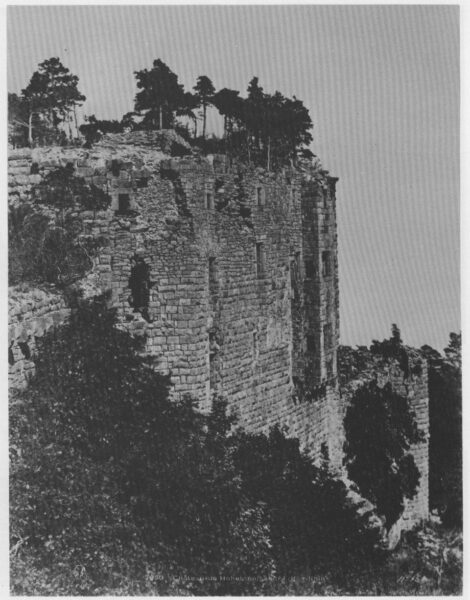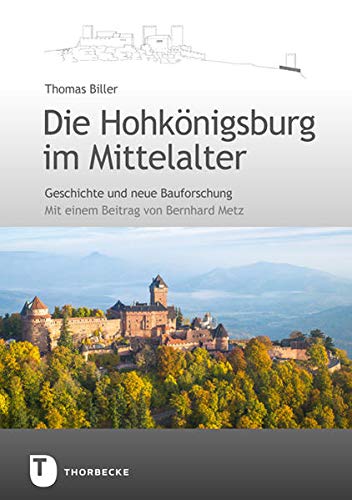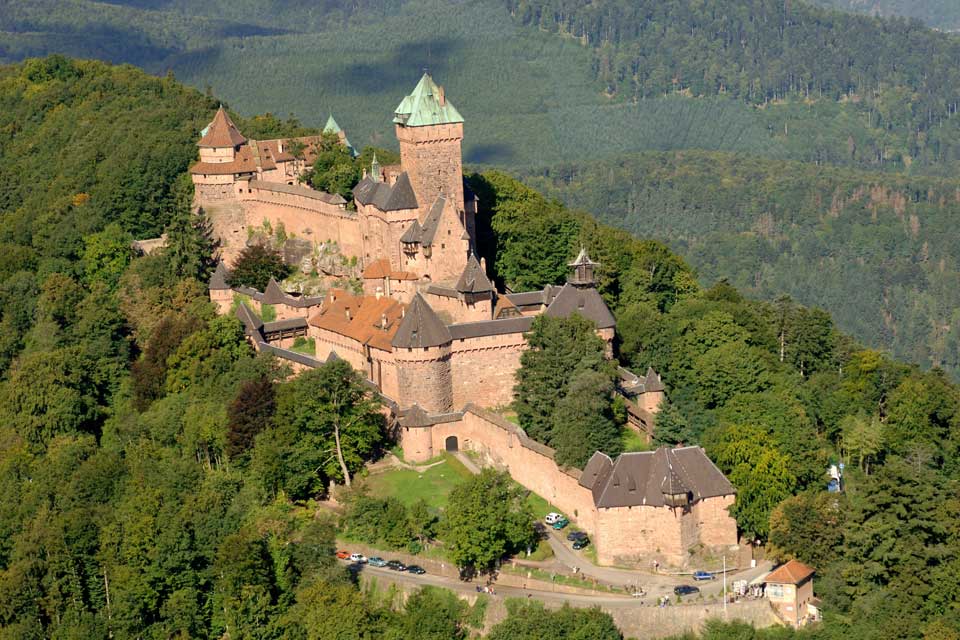The Castle Ruin at Staufenberg from the 12th century in Alsace was rebuilt by the Emperor, Wilhelm II between 1900-1908. An new archaeological report tells the story of this iconic “Medieval Castle”

The Royal Castle in Alsace – also known as the “Hochkönigsburg” or “Château du Haut-Kœnigsbourg” was built as a Royal Castle on the top of the Staufenberg – Stophanberch – a 757 meter high rocky spur overlooking the Rhine. This cliff is first mentioned in a deed concerning the valley below. The deed was issued by Charlemagne in 774 to St. Denis. At this point, a monastery was built nearby at Saint-Hippolyte by St Fulrad. Later, it converted to the Lièpvre – Leberau– a nearby priory in the valley
In 1147, however, the monks were complaining to the French King that Frederick II of Swabia, a Hohenstaufer, was building a castle on the ridge. In 1138 his son, Frederick Barbarossa, was elected King of the Romans. At this point, the castle was called Kinzburg – “Königsburg or King’s Castle.
Later, the castle passed from the Hohenstaufens to the Dukes of Lorraine, who enfeoffed it to a local family. After the crisis in the 14th century, robbers ensconced themselves in the ruins. In 1462, the surrounding cities of Colmar, Strassbourg, and Basel smoked them out. After this, the fortifications were rebuilt. In 1633 the place gave in after 52 days of siege, and was once again burned and looted. For the next couple of centuries, the ruin mostly function as inspiration for romantic poets and artists.
After the Franco-Prussian War 1870-1871, the region of Alsace-Lorraine once more reverted to Germany, where it was designated a German Imperial territory. Finally, from 1900-1908, the German Emperor commissioned the architect Bodo Ebhardt to reconstruct the medieval castle. The aim was to rebuild it according to what it would have looked like in the 15th century. On imperial command, though, the reconstruction was designed to give room for a more grandiose layout of for instance the dining hall, which was intended to celebrate the dynastic links between the Hohenstaufens, the Hapsburgs, and the Hohenzollerns, to which family the present emperor belonged.
After the war 1914-18, France once more governed the region. Until now, the castle was considered a typical German Romantic pastiche in the manner of the Neuschwanstein. However, recent archaeological excavations carried out between 2008-16 have shown that the current castle holds considerable medieval remains. Also, the reconstructed castle – as it stands – is a more fair reconstruction of what it may have looked like in the 15th century, than has hitherto been believed.
Recently a book has been published presenting the results of these excavations, including an exemplary introduction to the history of the castle. The book has been published as a separate volume outside the series: Die Burgen des Elsass to provide a thorough and scientific introduction to an iconic “medieval” sight, which receives more than one million visitors in a given year. And which continues to seduce people with its romantic idea of what a medieval castle looked like.
FEATURED PHOTO:
Château du Haut-Koenigsbourg © VisitAlsace
SOURCE:
 Die Hohkönigsburg im Mittelalter: Geschichte und neue Bauforschung
Die Hohkönigsburg im Mittelalter: Geschichte und neue Bauforschung
by Thomas Biller and Bernhard Metz
Series: Veröffentlichung des Alemannischen Instituts Freiburg i. Br. Nr. 87
Jan Thorbecke Verlag 2020
VISIT:
Château du Haut-Koenigsbourg
67600 Orschwiller, France
